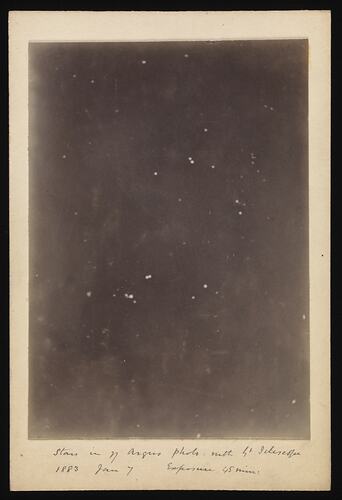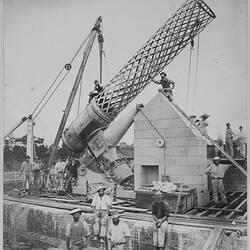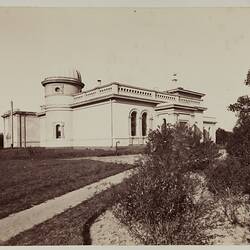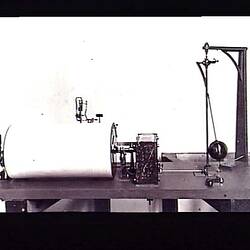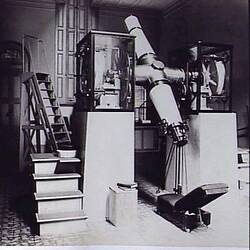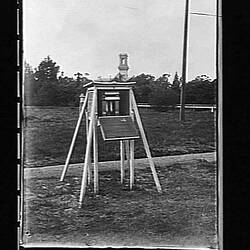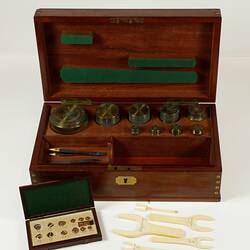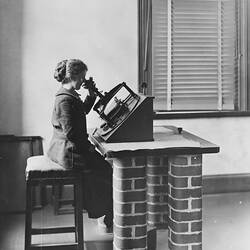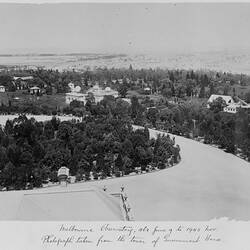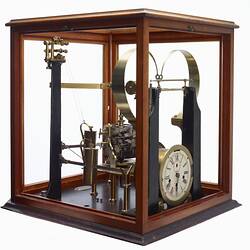Summary
Experimental photograph of Eta Argus Nebula taken by Joseph Turner with the Great Melbourne Telescope, 7 January 1883.
In 1882 astronomers in Britain and America began to successfully use the more sensitive dry plates to photograph nebulae and comets, which had previously not been clearly photographed with wet plates. Astronomers at Melbourne Observatory began experiments using the Great Melbourne Telescope to photograph nebulae in 1882, with mixed results. Assistant Astronomer Joseph Turner got good results taking photos of portions of Orion Nebula with a four minute exposure, but had no success with Eta Argus Nebula, despite exposures of up to 45 minutes.
Government Astronomer Robert Ellery noted in his annual report for 1882/3 that 'The great obstacle to obtaining photographs of faint objects is the difficulty of keeping such a large telescope steady during a period necessary for the exposure of the plate, so that, when a sufficient exposure has been obtained, the stars are all considerably enlarged from the vibrations and small movements of the telescope in the interval.'
Description of Content
Stars in nebula Eta Argus
Physical Description
SIlver gelatin photograph on paper
More Information
-
Collection Names
-
Collecting Areas
-
Acquisition Information
Donation from Office of Trade Measurement (formerly Weights & Measures Branch), Victoria: Local Government Department, Melbourne Observatory, by 1988
-
Photographer
Mr Joseph Turner - Melbourne Observatory, South Yarra, Greater Melbourne, Victoria, Australia, 07 Jan 1883
-
Place & Date Made
Melbourne Observatory, South Yarra, Greater Melbourne, Victoria, Australia, 07 Jan 1883
-
Format
Photograph
-
Inscriptions
PRINT MOUNTED ON CARD MARKED STARS IN N ARGUS PHOTO WITH GT TELESCOPE 1883 JAN 7 EXPOSURE 45 MIN BOX 5.6 PHOTOGRAPHIC PRINTS
-
Classification
-
Category
-
Discipline
-
Type of item
-
Primary support
97 mm (Width), 136 mm (Height)
This is image size as well - there are no margins in the photograph itself
-
Secondary support
110 mm (Width), 165 mm (Height)
-
Keywords
